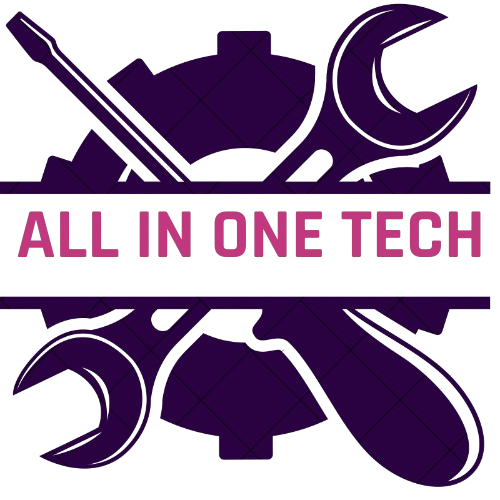
Hours before a federal law was set to take effect in January mandating that Chinese tech giant ByteDance sell TikTok’s U.S. operations, the social media app shut down. Though service was restored the next day, thousands of TikTok content creators were faced with the prospect of their source of income disappearing in an instant.
The incident laid bare a common problem creators face: As social media algorithms change and platforms fold and emerge, creators need to find a way to grow their following and take it with them to different sites. That’s where LTK comes in.
The 14-year-old company allows influencers to connect with brands, get commissions from products they plug, and hedge their bets by making money off any platform. The company also helps creators build a community that’s not subject to the vicissitudes of social media platforms: When a creator links to a product via LTK on any social platform, consumers have the option of following that person on LTK as well. And the company helps creators carry their sponsored content deals from platform to platform as well.
LTK, which raised $550 million in 2021 at a $2 billion valuation, works with more than 350,000 creators, 8,000 retailers, and a million brands. Today, LTK facilitates more than $5 billion in annual sales through its platform.
The company was cofounded by Amber Venz Box, a content creator herself, who also serves as its president. Venz Box came on the Most Innovative Companies podcast to discuss how LTK is navigating ever-changing social media algorithms, the increasing amount of AI-generated social content, and consumer fatigue from sponsored content.
Every creator I talk with says they’re seeing less and less return on investment from their social posts. How do you handle that trend as a company?
Social media has changed a lot in the last year specifically. Until 2024, social media was a place to follow creators and be part of communities. You had control over your feed. [Instagram head] Adam Mosseri came out in January and said this year the majority of what you see is going to be recommended content [that an algorithm selects]. We saw and felt that. If you had 100,000 impressions in January, you ended the year with about 25,000 impressions per post.
How do you deal with those changes?
We saw, as early as 2015, 2016, that their business is built on advertising. Our business is not built on that. So there are incentives that are misaligned. You have to displace a piece of creator content in order to insert an ad. That was the beginning of us thinking that we need to start planning. Snap also scaled quickly [around that time]. We were seeing the rise of a major scaled platform almost every two years, which presents fragmentation risk for our creators. We also saw consumers shift from desktop content consumption to mobile.
At the end of 2016, we realized we had to create a home base for our creators because when you play this tape forward, it’s not great for our industry. So by 2017, we launched the LTK app. That is where everything lives for [our creators], where they house their community, and [where] they could start using social media as a marketing platform.
Is video a big part of your business?
We introduced video to our platform 2017. Over the last two years our creators have produced 300% more video. It’s quickly becoming the largest content type on LTK and it’s the most important. We know that consumers really resonate with video. There’s a higher trust with that, and as a creator, I’m actually selling trust. Ultimately, I need to be in a relationship with my followers and video is the best way to do that. We totally rebuilt the app and relaunched it this year to be video-first.
When it comes to [the shutdown of] TikTok, we were the first generation to be fully disenfranchised for a minute. Our users were able to feel firsthand what it meant to have their community pulled. They need a home base to own their audience. We saw a huge uptick and people setting up their LTKs and driving their community over to the platform.
These days, consumers can spot sponsored content and advertising from a mile away. What are some of the ways a creator can stay authentic and also sell things?
Creators definitely don’t win by tricking people. For example, if I tell you this mascara is a tubing mascara and it’s not going to smudge on your face, and then when you try it and it smudges and it’s total crap and it’s flaky, you’re never going to trust me ever again. Creators need to be truly helpful.
The environment we’re in this year is so wild when it comes to trust because there’s just a lack of it across the internet. Consumers are looking at AI creators across TikTok. Mark Zuckerberg says the vast majority of content you’re going to see on his platform is going to be machine created. Those are super low-trust things. Being a human creator is a differentiator.
How does LTK make money?
When you look at the monetization structure, our incentives are aligned with the whole ecosystem. The creator wants to create content that resonates with consumers. When that content resonates, the consumer makes a purchase. In that case, the brand pays a commission or transaction fee to that creator. If you go to Sephora, maybe somebody’s getting a commission. If you go to me online and buy the lip gloss from me, I’m going to get a commission. That’s one piece of the business.
The other half is when brands come into our brand platform and say, “Hey, I actually am launching that new lip gloss and I want to make sure everyone talks about it.” They can find creators and have them do paid collaborations. The creator can accept offers through the platform or not. They’re being paid a flat fee to talk about the product.
LTK has tons of other [revenue-generating] products, but if you want to think of it in two core ways, it’s really the transaction revenue and then the campaigns or the collaborations.
Some of your competitors make money from affiliate links. What differentiates your business?
We’ve created a whole platform where creators set up and run their business. [We help with] everything from content creation and distribution to partnerships. There’s a really rich technology stack that doesn’t meet the consumer eye. And when it comes to consumer distribution, we have 40 million consumers. That’s about 38% of millennial and Gen Z women who are using LTK right now. LTK is in a category of its own pursuing a vision to be the creator app in the same way that LinkedIn is the professional app or Strava is the running app.
As a marketer, you want to leverage a creator who’s able to reach their audience. In January of this year, Adam Mosseri came out and said that stories are not a distribution point. They’re for friends who are friends in real life and know each other well. Everything he says comes true, so we should expect for the degradation of story reach even further than it already is. If you’re a brand marketer, it’s not great news. If you are working with a platform that is just providing affiliate links, then you may not have a place to use those links [when the algorithm changes]. We’re providing a home base to creators that’s separate from the influencer marketing platforms and storefront affiliate type of platform.
LTK raised $300 million from SoftBank in 2021. Is the company profitable?
Yes. We’re really unique for a SoftBank investment. My husband and I started the business and self-funded it. It has remained within our family and we still both operate it. I’m the president and he’s the CEO of the company. Ten years in, we decided to give some relief to some of our shareholders. We were already a profitable business. What SoftBank allowed us to do is give some reward to people who had been with us for about 10 years and run our road map forward. Since that time, we’ve more than doubled the business. And we remain EBITDA positive.
Are you incorporating AI and machine learning into LTK?
Our team uses a suite of 20 different AI companies and products to be more efficient, whether it’s from legal to design to everything else. At LTK we think that our creators being human is their superpower, but we can make them more efficient. AI is being used across all of our services. We’ll be releasing AI music, which is music that’s custom-created for the videos and content that our creators have made. We also use AI to pre-tag their content. The CRM for our creators is also totally automated. We’re also using it to send the right message to the right customer at the right time [to get them to buy something]. We sent over a billion notifications last year on behalf of our creators to their customers. On the brand side, we’re building campaigns for them in partnership with the right creators. The vast majority of creators we are recommending to brands are based on AI insights.
Will you ever let AI influencers on the platform?
We will not. The human promise is so important. There’s been a lot of articles that have come out actually about AI creators. They can gain a following and they look so real, but ultimately we think there’s a lack of trust. They’re not going to know that something ships faster, how it fits you. Again, it becomes like an ad, right? Because anything they’re going to be doing in that context is going to be because they were paid or told to by someone. So we will remain a human app, but it’ll be powered by AI. And the music might be created by AI, but the person that you’re chatting with and all that is real.


